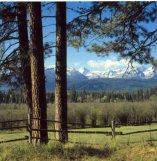| Community-Owned Forest Resource Library | Funding for Community-Owned Forests | Community-Owned Forest Links | Send Us Your News and Comments! |
Community-Owned Forests Library
| About
Community Forests Background information and reports on community forests |
Community-Owned
Forests Resources Case studies, governance models and website links for community and tribal forests |
Community-Owned
Forests Conference Presentations from conference held June 2005 |
| Engaging
the
Community Resources for successful community involvement |
Timberland
Ownership Reports on changes and trends in forest ownership |
Community
Forest News News articles on community forests and timberlands |
| Planning
and Management How-to publications and examples of forest management plans |
Management
Issues Information and reports on conservation easements, timber sales, wood energy and other forest management issues |
Monitoring
and Evaluation Resources for developing management indicators and evaluation plans |
Acquiring and Managing a Community-Owned Forest: A Manual for Communities
Communities Committee.
This manual provides a guide for communities interested in establishing a community‐owned forest, whether just beginning to think about a project or re‐engaging community residents around land already in community ownership. Creating and managing a community‐owned forest requires the collaborative development of a community vision and mission for the forest, a commitment to sharing in the costs and benefits of that forest, and the crafting of a governance and operational structure that ensures consistent, long‐term management for forest resiliency and sustainability. Our manual includes step-by-step advice on getting started, engaging the broader community, financing acquisition, and long-term management and stewardship, as well as an extensive, annotated list of additional resources.
Approaches to Ecologically Based Forest Management
John Kotar, Department of Forest Ecology and Management, University of Wisconsin-Madison.
Aimed at natural resource professionals who prepare forest management plans for private landowners, however the concepts presented apply to all ownerships. The publication reviews ecological principles that can be applied to forest management and suggests a method for identifying a range of management alternatives by considering ecological principles, as well as landowners' goals, constraints and opportunities.
Choosing a Silviculture System
Ontario Ministry of Natural Resources and Eastern Ontario Model Forest.
A short guide explaining three silviculture systems - how they work, resulte, where they work best, and benefits and disadvantages.
Forest Management 101: A Handbook to Forest Management in the North Central Region
USDA Forest Service North Central Research Station, Northeastern Area State & Private Forestry and the University of Minnesota Department of Forest Resources.
Basic information about forest management separated into six sections: management objectives, socio-economics, ecology, forest health, silviculture, and best management practices. These sections contain information germane to all of the specific tree species guides.
A Guide to Stewardship Planning for Natural Areas
Ontario Ministry of Natural Resources.
Step-by-step guide to preparing a forest stewardship plan, including taking a history of the land, preparing a property map, determining stewardship objectives, and taking a detailed inventory. Forms used in the guide are available here.
A Landowner's Guide to Selling Standing Timber
Ontario Woodlot Association.
A detailed handbook on preparing for a timber harvest, including sections on the basics of selling timber, long-term management, determining whether to hire a professional forest consultant, preparing for harvest, harvest operations, and legal considerations. References to legal, contract, tax and workplace safety regulations are specific to Canada.
Moving Toward Sustainable Forestry: Strategies for Forest Landowners
Virginia Cooperative Extension.
Describes management strategies based on eight principles of sustainable forest management, focusing on the owner's role in sustainable forest management, forest management and water quality, enhancing tree growth, protecting special areas, providing wildlife habitat, protecting aesthetic and recreational values, financial incentives for sustainable forest management and enhancing the local economy.
Planning for Forest Stewardship
USDA Forest Service.
A guide to preparing a forest stewardship plan. Though written for participants in the Forest Service's Forest Stewardship Program, which is open to private forest owners, the information, issues and questions it includes provides are useful for management planning for a community forest. It also contains information on some possible sources of funding and technical assistance.
Preparing a Management Plan
Ontario Woodlot Association.
A short guide outlining the basic steps in preparing a forest management plan.
A Stewardship Handbook for Family Forest Ownerships
National Association of State Foresters.
A guide to developing a stewardship plan based on NASF principles for a well-managed forest, and recognizing results of good stewardship on the ground.
Wood Energy
Harnessing the Power of Local Wood Energy: Ensuring a sustainable supply of woodchips for your school
Caitlin Cusack. The Forest Guild, 2008.
A case study of the installation of a woodchip heating system at school in Bristol, Vermont, providing a framework that other communities can use to develop a standard for sourcing woodchips. While the guide is specifically geared toward ensuring a sustainable supply of woodchips for schools, it is also applicable to other community buildings.
Wood Chip Heating Systems: A Guide for Institutional and Commercial Biomass Installations
Timothy M. Maker. Biomass Energy Resource Center, 2004.
A detailed, step-by-step guide to wood chip heating systems, from investigating the feasibility of burning wood chips to studying its cost-effectiveness, and finally installing an appropriate biomass system. This goes from providing an overview of wood chip heating systems and appropriate settings for their application to detailed technical specifications for installation.
